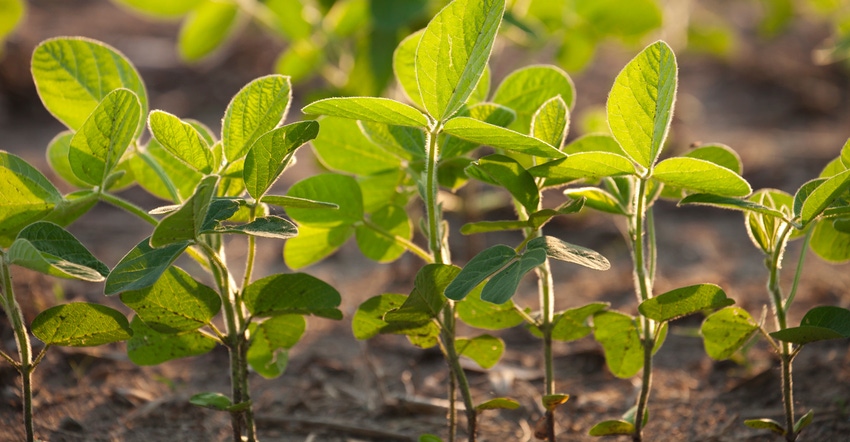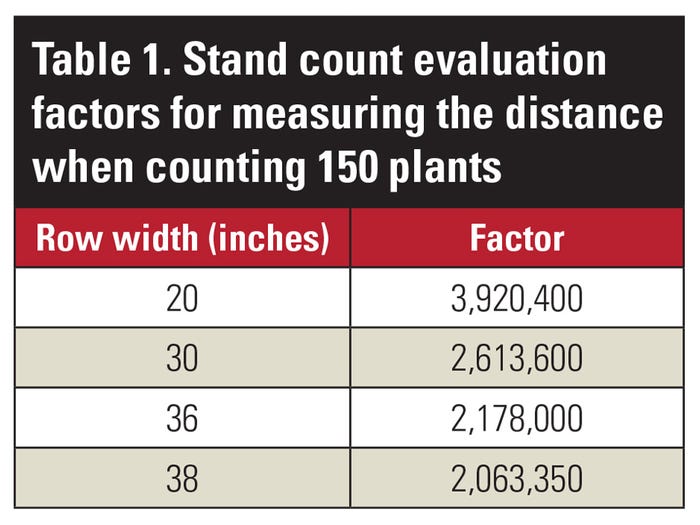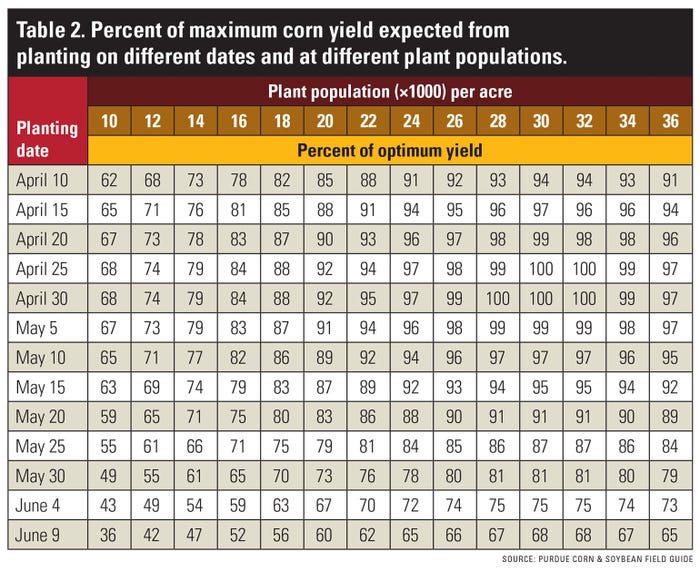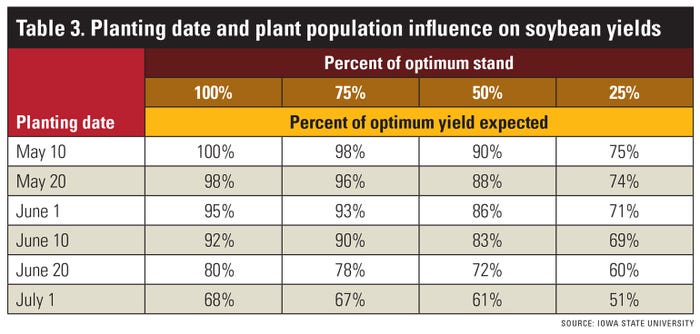March 26, 2020

Looking back to last spring and forward to another planting season, it is a good management practice to evaluate corn and soybean stands to determine if replanting is warranted, if additional nitrogen is needed and if other management tasks would be beneficial.
Being that many Ohio growers have dealt with recent wet springs, and because flooded fields early in the spring can significantly affect the survival of young corn and soybean plants, it’s a good idea to assess corn and soybean stands early.
Methods of evaluating corn and soybean stands
When evaluating a corn or soybean stand, only count plants that have a good chance of survival. Keep in mind that while corn plant populations are a critical component of yield, soybean plants are better able to compensate for low plant populations. A significant soybean stand reduction does not necessarily mean there will be a significant loss in yield potential, as soybeans have the ability to branch to fill in gaps in the stand.
There are three common methods for taking stand counts: the 1/1,000-acre method, the wheel method and the hoop method. My preference is to use the hoop method in drilled (narrow-row) soybeans, and the 1/1,000-acre method for soybeans planted in 15-inch through 30-inch row spacing.
In small corn, my preference is to use the wheel method because it provides a larger sample size, which may more accurately represent the true population of the area where the stand count is taken.
How to conduct stand counts by these various methods can be found in almost any agronomy guide. Because of this, I won’t go into detail on the how-tos for the 1/1,000 acre or the hoop method. However, the wheel method may not be as well-known. To measure plant population using the wheel method, count 150 plants in a row, measuring the distance from start to finish as you count with a measuring wheel. Divide the number of feet traveled into the appropriate factor (see Table 1) to determine the plant population.
For example, if you walked 94 feet while counting 150 plants in 30-inch row spacing, the population is 2,613,600 divided by 94, which equals 27,804 plants per acre. You should repeat the count several times and average the results.

What is the impact of flooded fields?
Plants need oxygen to survive, and oxygen is depleted in the soil after about 48-hours of flooding. Corn and soybean plants at or below the soil surface have the greatest risk of dying when a field is flooded; however emerged plants can survive for two to four days. Temperature plays a big role in survival rate. If temperatures are above 77 degrees F, the plant may not survive 24 hours underwater. Cooler temperatures may allow plants to survive up to four days of flooding.
Stand counts of healthy plants should be taken to determine final stand. A few days after water has receded, dig up corn seedlings and inspect the growing point. A white growing point that is still firm indicates the plant is recovering. Dark or soft growing points usually precede plant death. Of course, with soybeans, if you can see the plant, you are looking at the growing point. Unlike corn, which maintains the growing point below ground until around the five-leaf stage, soybeans present a growing point aboveground from the very minute the cotyledons break the soil. The unknown following a flood is the frequency or increased rate of soil diseases such as pythium or phytophthora root rot.
Note that with flooded fields, significant loss of preplant nitrogen through denitrification or leaching can occur in corn fields submerged for more than two days. Saturated soils result in denitrification, which tends to be more common in heavier-textured soils, while leaching is more common in sandy soils. Sidedressing additional nitrogen may be warranted.
In addition, as wet soils dry, the soil surface can form a crust, causing seedling emergence challenges. A rotary hoe can break up the crust and aid seedling emergence. A rotary hoe can be used on corn from emergence through about the second rue-leaf stage, with little stand loss. On soybean, avoid using during the “cracking stage,” as stand reductions could be substantial. For best results, operate the hoe at speeds of 8 to 12 mph.
Replant decisions
The decision to replant a field can be complex because plant stands can vary significantly across a field. And other factors such as original planting date, replanting date, and herbicides can enter into the equation. The following steps can help in determining whether to replant a field.
Corn example
• Take a stand count in at least five areas of the field to determine the surviving plant population.
• Once the average plant stand is known, use Table 2 to determine the percent of normal yield that can be expected for the existing stand.
• In corn, make deductions for gaps in the row. Several small gaps (1-3 feet) can add an additional 2% or 3% reduction in yield potential. Larger gaps (4-6 feet) can reduce yield potential by 4% to 6%.
• Compare the potential yield of the current stand using the original planting date to the potential of the replanted stand at the later replanting date. Such as:
Current stand of 20,000 from April 30 planting date. Yield potential equals 200 bushels per acre normal yield potential) times 0.92 equals 184 bushels per acre.
Replant stand of 30,000 for May 30 planting date. Yield potential equals 200 bushels per acre times 0.81 equals 162 bushels per acre.

Soybean example
Optimum stands for soybean range from 120,000 to 200,000 plants per acre, depending on row spacing and planting date. However, soybeans can compensate well for thin stands and gaps. If there are 100,000 to 120,000 plants uniformly spaced per acre, yield should be very close to maximum, and replanting or “thickening up” the stand would not be recommended. However, if populations drop to 100,000 or less, then adding more beans could be beneficial. Table 3 can help determine whether replanting is justified.

Miller is a certified crop adviser as well as a technical agronomist for Dekalb/Asgrow.
You May Also Like




